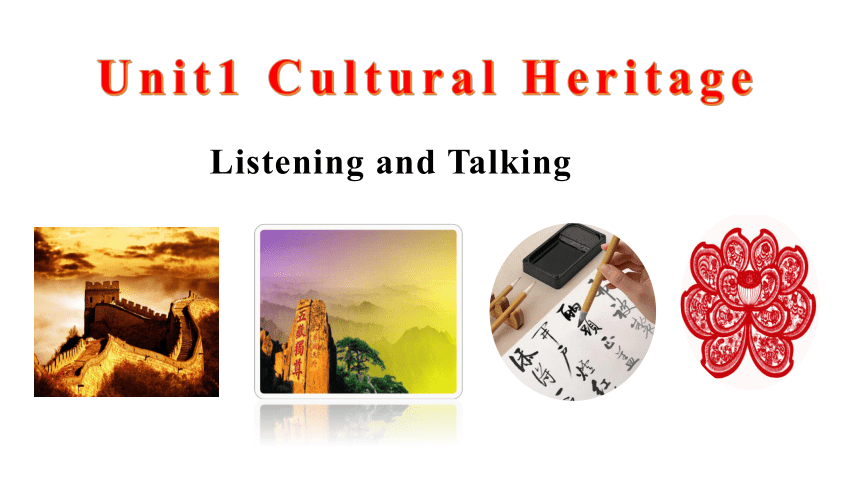(
课件网) Unit1 Cultural Heritage Listening and Talking To talk about history and culture. To listen for general and specific information about the Kremlin and Red Square. To learn to start a conversation. To learn to talk about a cultural site. Learning objectives The Kremlin, which dates to 1156 but occupies a site used for far longer, was the center of the Russian. With nearly a dozen palaces and churches, the Kremlin is a symbol of eight centuries of Russia’s history and culture, not to mention its power. Over the years the Kremlin is a command center, and today a home for the Russian president. 克里姆林宫,是俄罗斯的一组建筑群,位于莫斯科心脏地带,是俄罗斯联邦的象征、俄罗斯总统府的所在地,曾是俄罗斯沙皇的居所之一。 克里姆林宫的“克里姆林”在俄语中意为“内城”。克里姆林宫享有“世界第八奇景”的美誉。 莫斯科克里姆林宫是俄罗斯国家的象征,是世界上最大的建筑群之一,是历史瑰宝、文化和艺术古迹的宝库。 Background information Red Square is a city square (plaza) in Moscow. It is often considered the central square of Moscow since Moscow's major streets, which connect to Russia's major highways, originate from the square. 红场位于俄罗斯首都莫斯科市中心,临莫斯科河,是莫斯科最古老的广场 ,是重大历史事件的见证场所。更是俄罗斯重要节日举行群众集会、大型庆典和阅兵活动之处,是世界著名旅游景点。 红场的北面为俄罗斯国家历史博物馆, 东面是莫斯科国立百货商场,南部为瓦西里升天教堂。西侧是列宁墓和克里姆林宫的红墙及三座高塔,在列宁墓上层修建有主席台。每当俄罗斯重要仪式时,领导人就站在列宁墓上观礼阅兵。 Have you ever been to Moscow Can you list some famous sites and attractions for visitors there Saint Basil's Cathedral 圣瓦西里大教堂 Kremlin 克里姆林宫 Red Square 红场 Three people are talking about attractions in Moscow. Let’s listen and learn. Listen to the conversation and choose the correct answers. P7 1 1. Where are the speakers A. On a street. B. On a plane. C. On a bus. 2. What are they doing A. Drawing a map. B. Sightseeing. C. Studying culture. ·Built between _____ and _____ centuries ·The palace where _____ lives ·The Saint Basil's Cathedral looks like _____ ·The _____ part of Moscow ·Place for parades, concerts, and even _____ What do you know about the Kremlin and Red Square Listen again and complete the fact sheet. P7 2 World Cultural Heritage Site Fact Sheet THE KREMLIN AND RED SQUARE, MOSCOW 14th 17th the Russian president a flame/fire central ice hockey games Tip: Read the sentences with gaps and predict what type of word /part of speech the target words will be. For example, “build between the ___ and ___ centuries” will be numbers in their ordinal forms. Listen again and take down the polite expressions you hear in the dialogue. Tourist 1: Excuse me, but what is the Kremlin exactly Tourist 2: Forgive me for asking, but can you tell me more about Red Square [Street sounds from Red Square.] Tour guide: OK, here we are: the Kremlin and Red Square. Tourist 1: Excuse me, but what is the Kreml ... ...

